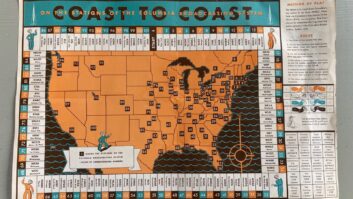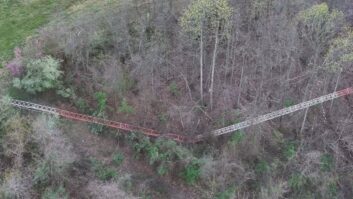CALGARY, Alberta What do rush-hour traffic reports from 2UE in Sydney, New South Wales, CHED in Edmonton, Alberta, and Pirate FM in Cornwall have in common?
Answer: They are all provided by aircraft flown by wholly owned subsidiaries of Global Traffic Network (GTN).
Based in New York City, GTN operates the Australian Traffic Network, the Canadian Traffic Network, the European Traffic Network and the United Kingdom Traffic Network. Clients include the UKRD Group in Britain, the Australian Broadcasting Corp., as well as groups and individual stations across each of its operating areas.
DAB service

GTN flys a Robinson R44 Newscopter for CHED and other stations on three continents.
GTN is also responsible for Traffic Radio, a rolling traffic service produced and managed by the company on behalf of the Highways Agency and Transport for London. Traffic Radio broadcasts six regional streams of around-the-clock traffic reports on 31 local DAB digital radio multiplexes and the Internet with reporters based at the National Traffic Control Centre near Birmingham.
All of the GTN companies do essentially the same thing: provide aerial and ground-based traffic reports for broadcasters — for free.
“We provide radio and TV stations with a service that is better than they can provide for themselves, at no cost,” said Scott Cody, chief operating officer for GTN. “What we do is take advertising inventory from them during the traffic reports in lieu of payment. That’s how we get paid.”
GTN then sells aggregated ad spots in its traffic reports locally, regionally and nationally.
The GTN model starts by relieving broadcasters of responsibility for buying, staffing, maintaining and flying their own aircraft. Instead, GTN does this for them; providing an aerial platform from which station talent can provide live broadcasts back to their respective stations.
The company’s aircraft — most of which are nimble Robinson R44 Raven II Series Newscopters fitted with internal and external TV video cameras supplemented by several fixed-wing aircraft — are owned by GTN.
GTN in action
In Australia, GTN supplies the pilots and ground support directly, but in Canada the aircraft are leased back various charter firms that supply pilots, hangar and maintenance support.
In the United Kingdom, a mix of the two models is used since the company acquired the commercial division of UBC Media in early 2009. GTN’s U.K. operations traditionally provided its own pilots and ground staff, but UBC Media outsourced its traffic and information services to third parties in order to focus on airtime sales.
Where possible, GTN likes to hire a single charter company to service multiple markets. For instance, in Canada Canadian Traffic Network helicopters are flown primarily by Mountain View Helicopters of Calgary, Alberta.
“We started flying for CTN in our hometown in 2006,” said Paul Bergeron, president and chief pilot for Mountain View. “We then expanded to Edmonton [Alberta], then Toronto and Hamilton [Ontario]. We’re now providing coverage in Winnipeg [Manitoba] as well.”
“We started out with different vendors in different cities,” said CTN President Ivan Shulman. “Then we realized that it made sense to have just one vendor who knows our helicopters inside out.”
The GTN helicopters and airplanes are configured to support a pilot, producer (who controls the microphones and cameras) and on-air talent. In some instances, some stations hire GTN to provide station-specific traffic reports from a local GTN studio, because “they don’t want the noise associated with in-cabin aerial broadcasting,” Cody said.
The Robinson Newscopters are fitted with a standard Broadcast Microwave Services 2/2.5 GHz analog transmitter is standard, along with an omnidirectional antenna (6 dB gain) that transmits up to 65 kilometers.
The signals are sent from the air to a local GTN studio and then sent to the station by a variety of loop lines and ISDN lines.
Capabilities and limits
GTN traffic aircraft allow radio stations to provide branded real-time traffic information at no hard cost. They also serve as mobile platforms for breaking news coverage.
Although generally used for television, such airborne video can also be ported to a radio station’s Web site as an additional aid for listeners.
However, there are limits to what GTN aircraft can do. For one thing, they only fly when visibility conditions are acceptable: a 450-meter ceiling and enough clarity to allow the pilots to fly by sight, rather than instruments. Also, traffic-spotting aircraft usually have to maintain a minimum altitude above the highest object in their flying area; avoid restricted airspace such as airports or military and governmental installations; and defer to police or military aircraft as required.
Above all, safety comes first, said Shulman: “If Paul [Bergeron of Mountain View Helicopters] says the flight is ‘no go’ due to weather, then there is no discussion.”
Limits notwithstanding, GTN’s traffic reporting system offers broadcaster a leg up over their competition.
“We asked the people of Cornwall and they told us airborne traffic reports are something they really want for their radio station,” says Pirate FM Program Director Bob McCreadie. “We’re grateful to Global Traffic Network for the service, which will help us cement our Number One position in Cornwall.”










